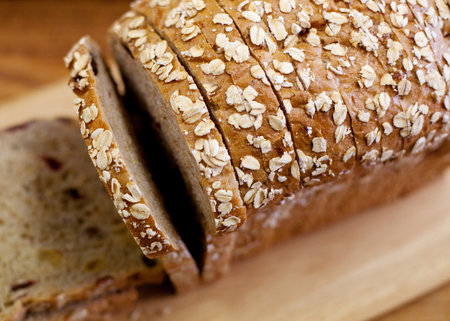MYTH 1: Always go with the fat free option.
Fat free doesn’t always mean it is a healthier option. Often times when the fat is taken out of a product it is replaced with sugar to improve the flavor leaving you dissatisfied. Instead of choosing products based off of the ‘light’ or ‘fat free’ claims on the front of the package, flip over the product and take a look at the grams of sugar, the fat, saturated fat, and calories. Remember that not all fats are bad either. Stick with heart healthy and satisfying unsaturated fats that can be found in plant sources such as nuts, olive oil, or canola oil.
MYTH 2: Reduced sodium means low sodium.
If you have ever taken a look at reduced sodium soy sauce you are aware that this is certainly not the case. “Reduced” means the product contains 25% less of a certain nutrient than what the original version had. So with items with extreme amounts of sodium, such as soy sauce, 25% less sodium really isn’t saying much. To find low sodium items look for 140 mg or less of sodium per serving.
MYTH 3: Multi grain or wheat bread is a healthy whole grain option.

Wheat bread, multi grain, or other brown colored breads are not necessarily whole grain. Even products that say ‘Contain whole grains’ on the front of their package may not be 100% whole grain or even the majority whole grains. Look at the ingredients list to see if the word ‘whole’ before a grain is listed as the first or the second ingredient next to water to determine if the product is mostly whole grain. Scan the ingredients list for refined grains that may be added to the product as well to see if the product is 100% whole grain.
MYTH 4: Salads are always a healthy choice when dining out.

If the salad was just vegetables, beans, lean protein, and an olive oil and herb vinaigrette, then yes it would be a healthier option. Unfortunately, majority of the time this is not the case. Be wary of salads that are decorated with lots of cheese, fried foods, bacon, crispy toppings, sour cream, chips, or high fat meats on them. If you spot these as the main ingredients in the salad it may be best to go with those fish tacos you wanted and satisfy your craving and maybe even cut back on calories. If you do order a salad, ask for the dressing on the side and apply sparingly. If the salad contains a protein, choose chicken, turkey, or fish, and have it prepared grilled, baked, or broiled.
MYTH 5: You should completely deny your cravings if they are for “bad” foods.
 If you are craving chocolate eat a piece of chocolate. Odds are if you are craving something and thinking about it non-stop, eating a yogurt or other healthy option won’t satisfy the craving. You’ll end up eating twice as much because you’ll eat other foods in an unsuccessful attempt to get rid of the craving and then you’ll end up gorging on your craving as soon as you get the chance. What does this mean for you? It means you’ll have a much larger calorie load than if you had just satisfied the craving in the first place. Just remember to exercise portion control and continue to limit your intake of discretionary calories.
If you are craving chocolate eat a piece of chocolate. Odds are if you are craving something and thinking about it non-stop, eating a yogurt or other healthy option won’t satisfy the craving. You’ll end up eating twice as much because you’ll eat other foods in an unsuccessful attempt to get rid of the craving and then you’ll end up gorging on your craving as soon as you get the chance. What does this mean for you? It means you’ll have a much larger calorie load than if you had just satisfied the craving in the first place. Just remember to exercise portion control and continue to limit your intake of discretionary calories.
Want to learn more about the benefits of whole grains?
Taco salad photo: I Believe I Can Fry via photo pin cc




